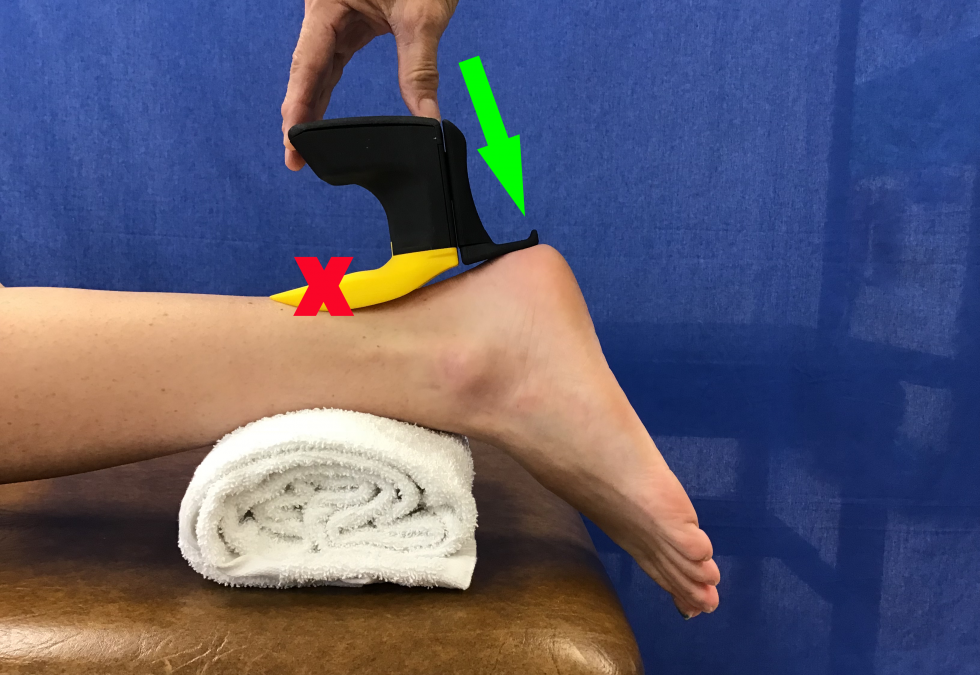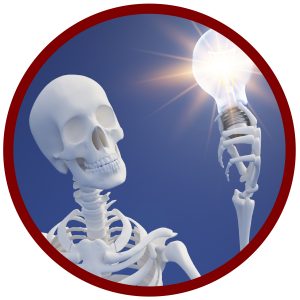

Ankle Mobilization Techniques to Improve Motion
There are a variety of ankle injuries that could benefit from ankle mobilizations to restore range of motion and function. Information about the indications, contraindications, and dosing of joint mobilizations can be obtained in the Joint Mobilizations blog (June 13).
Ankle Mobilization Techniques
Here we will focus on four joint mobilizations for the ankle: talocrural posterior glides for dorsiflexion, anterior glides for plantarflexion, subtalar medial glides for eversion, and lateral glides for inversion.
Facilitating Dorsiflexion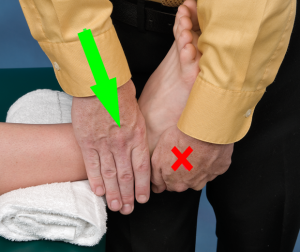
The talocrural joint compromised of the tibia, fibula and talus permit dorsiflexion and plantarflexion in the sagittal plane. A talocrural glide in the posterior direction facilitates dorsiflexion. Positioned with the foot over the edge of the plinth, a towel supports the distal tibia and fibula. The clinician stabilizes the distal leg by cupping the calcaneus in the hand and the web space of the other hand contacts the anterior aspect of the talus. A posteriorly directed force is applied to the talus, creating a talocrural posterior glide for dorsiflexion.
Quantifying a Posterior Glide
To quantify the magnitude of a talocrural glide, the Mobil–Aider device could be used. The patient is in the same position, supine, with the foot over the edge of the table, towel underneath the distal lower leg, and the green (H-E) attachment is donned on the device. The joint line is identified and aligned with the axis of the Mobil–Aider. When performing a posterior glide of the talus, a visual display of the quantity of linear translation will appear on the digital screen.
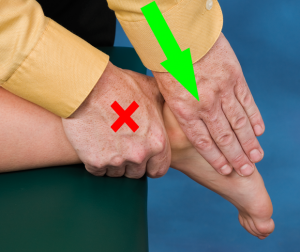 Facilitating Plantarflexion
Facilitating Plantarflexion
Talocrural anterior glides are used to enhance plantar flexion. For this mobilization, the patient is prone. The foot is over the edge of the table. The clinician stabilizes the distal leg, and the web space of the clinician’s hand contacts the posterior aspect of the calcaneus. Notice how the forearm is aligned with the direction of the mobilization. The mobilizing hand creates an anteriorly directed force through the calcaneus, which mobilizes the talus as well in the anterior direction.
Quantifying an Anterior Glide
Likewise, the Mobil-Aider can be used to quantify an anterior glide. By donning the yellow (H-C) attachment and aligning the joint lines, the technique is performed in the manner previously described.
Medial & Lateral Glides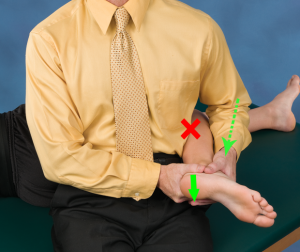

The subtalar joint is compromised of the talus and the calcaneus bones. The motion that occurs at his articulation is inversion and eversion. Subtalar motions can be performed in either the medial or lateral direction. These tasks are best performed in side lying. By flexing the knee and wrapping the patient’s leg around the rib cage of the clinician, the tibia can be stabilized. Impact a distraction force and a medial glide is used to improve subtalar eversion. 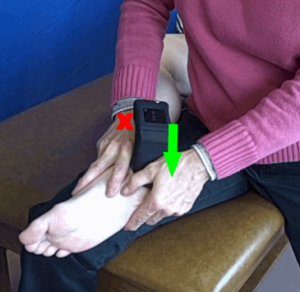 The medial force is imparted to the calcaneus. This is a downward movement with the thumbs on the calcaneus, hence a subtalar medial glide for eversion. If the translation of the calcaneus is performed in an upward direct, it is a lateral glide for inversion. These medial and lateral glides can also be quantified with the green (H-E) attachment on the device. The techniques are the same as described and the digital reading in millimeters of motion are displayed on the screen.
The medial force is imparted to the calcaneus. This is a downward movement with the thumbs on the calcaneus, hence a subtalar medial glide for eversion. If the translation of the calcaneus is performed in an upward direct, it is a lateral glide for inversion. These medial and lateral glides can also be quantified with the green (H-E) attachment on the device. The techniques are the same as described and the digital reading in millimeters of motion are displayed on the screen.
These joint mobilization techniques can also be found in iOrtho+ Premium Mobile App. You can download the app at: https://iortho.xyz/ If you would like more information about the use of the Mobil–Aider or would like to view videos describing the use of the Mobil–Aider to quantify joint mobility for a variety of joints, please visit https://mobil-aider.com/
- Gulick DT. iOrtho+ Mobile App. DTG Enterprises LLC. 2020
- Wise CH, Gulick DT. Mobilization Notes. FA Davis Publishing, Philadelphia. 2019
